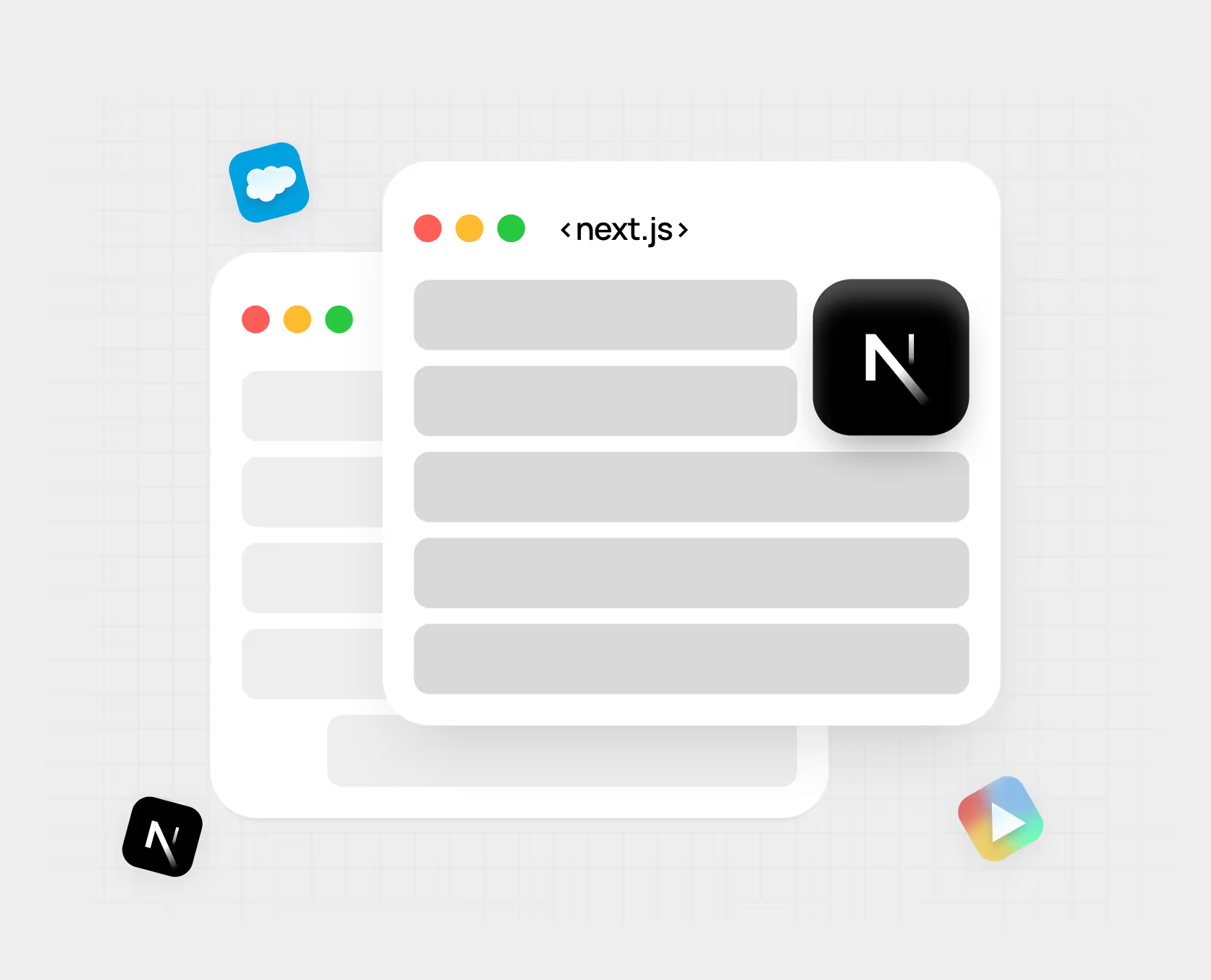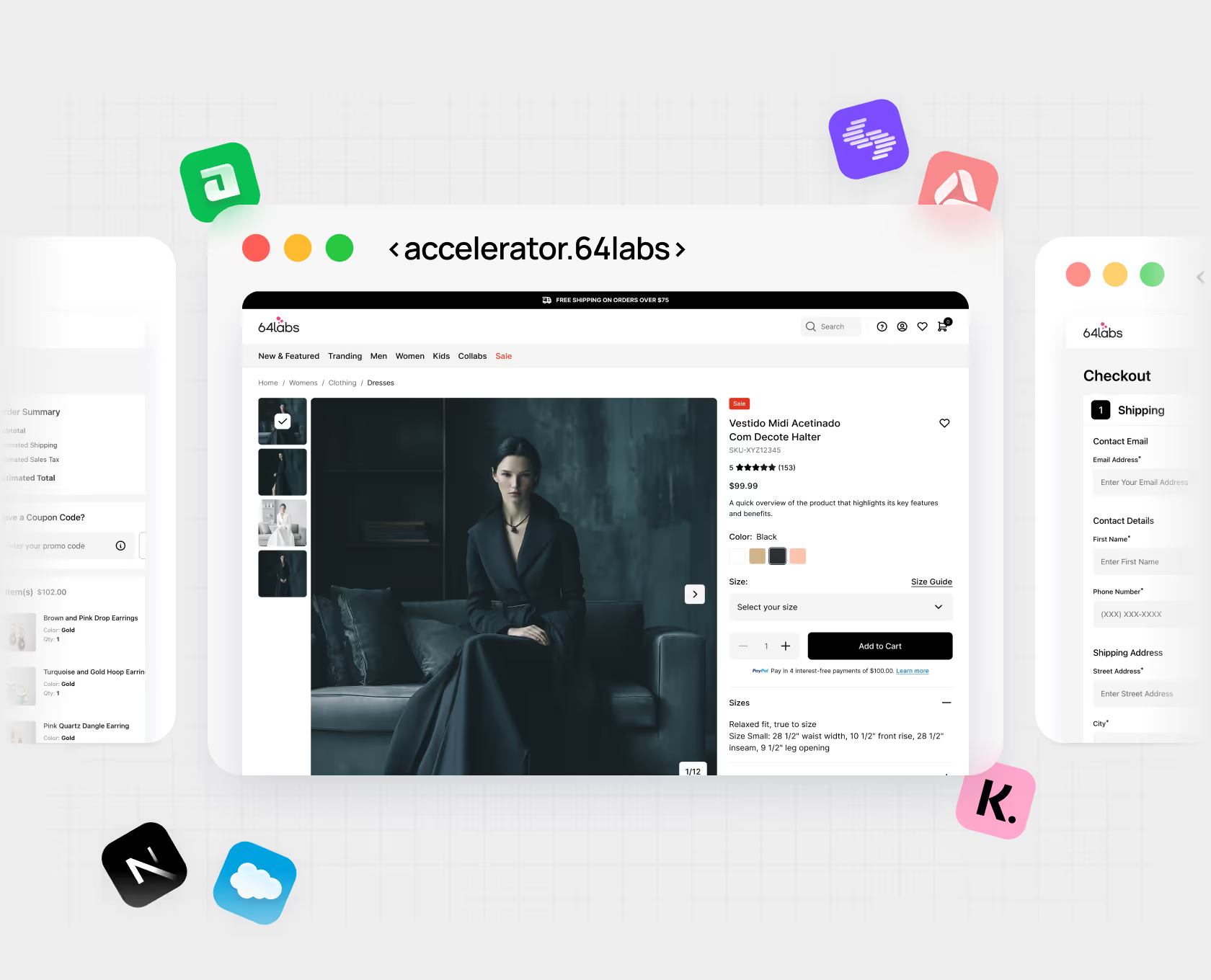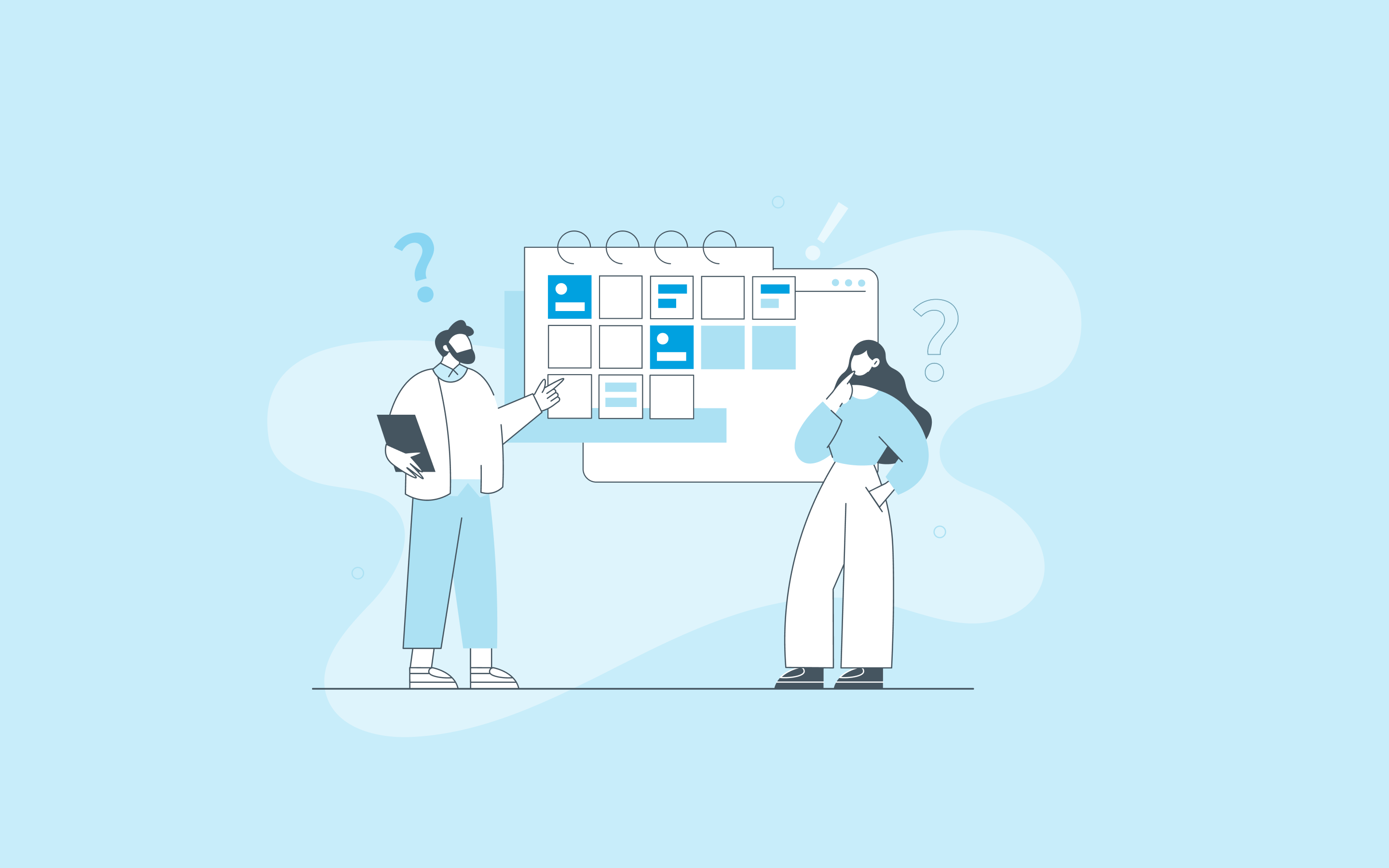
4 launches in two years
Next.js + Vercel SFCC Composable Storefront
Going composable with Next.js and Vercel removes platform constraints. You get the freedom to build with modern frameworks, deliver lightning-fast storefronts at the edge, and scale seamlessly while still leveraging Salesforce Commerce Cloud’s enterprise backbone.
Proven Track Record
We’ve delivered 10+ enterprise composable storefronts and bring hands-on experience in Next.js, Vercel, and Salesforce Commerce Cloud
Accelerated Delivery
Our composable storefront framework helps brands launch multi-site storefronts in 16-26 weeks without sacrificing quality or performance.
Performance-Obsessed
Next.js + Vercel ensures storefronts load lightning-fast worldwide, with built-in testing and CI/CD pipelines for confidence at every release.
Experience in Headless CMS
We make content and commerce work together and ensure smooth integration with CMS platforms to deliver scalable omnichannel experiences.

Saving months of Development time with the 64labs Accelerator
The 64labs Accelerator provides a ready-to-use foundation for your composable storefront, featuring prebuilt UX patterns, state management, and essential commerce flows. It includes connectors for CMS, search, and payments, along with a reference architecture and infrastructure templates that integrate seamlessly into your stack. This approach reduces unknowns and rework, compressing a typical 9-month launch timeline into just 4-5 months.
Project Lifecycle tailored for Composable Delivery
Sprint Ø
Is a four-week phase. We connect our SFCC accelerator to see what works out of the box and identify the quantity and difficulty of back-end work required. By the end of Sprint Ø you will normally have an end-to-end functional PWA. We design and architect the complete CMS with your merchants. We break the project down into component-based user stories working closely with your team to enter Scopotype phase with a clear view of the road ahead.
Scopotype
Is an eight-week phase in which 64labs completes about 70% of the work of the project. The pace is driven by 64labs and occurs in four 2-week sprints with full QA, demonstrations of completed work and releases every sprint. Our aim during this phase is to build out all the critical foundational work, implement and migrate a complete CMS, and arrive at the Build to Launch phase with a clear, scope of what remains to be done and who will do it.
Build to Launch
Is a variable length phase (between 4 and 12 weeks) where 64labs finishes the project while transferring knowledge and responsibility more towards an internal team or existing partner. The core work of the site is complete but some key tasks remain. Internal developers can be effective during this phase and can gain experience in the codebase, taking ownership of the project. At the end of BTL, the project should be complete and ready for UAT.
Launch
Launch is a four-week phase that can take place immediately after BTL or some weeks later. This phase is designed to take advantage of 64labs's extensive experience launching composable sites and anticipating the specific challenges of a Go Live. Launch phase can include a partial launch, a split launch or regional launch. Launch phase starts two weeks prior to intended Go Live and continues for two weeks afterwards.
Momentum
Momentum is exactly what it sounds like. All of us have experienced that deflation at the end of a project when everyone disappears to the next big thing. But the battle to be a composable ecommerce powerhouse does not end at launch: it begins. This is where 64labs can help. A Momentum engagement allows your team to draw up a six-month roadmap of improvements to the site and have a lightweight 64labs team of 2-4 people lead and deliver that work.
Support
Sometimes you just need to buy some time to recruit for your internal team. Sometimes your incumbent partner needs time to find real composable experts that can help you. Whatever the reason, 64labs is happy to provide trained project-hardened engineers to clients after projects even where there is not the roadmap in place to commission a Momentum phase. When you just need experienced help keeping the ship afloat in composable, 64labs is there for you.
Technologies matter
We partner with industry leaders who genuinely understand composable commerce and deliver real, reliable solutions.
Not Sure Where to Start?
Find Out If You’re Ready for Composable
Before investing in Composable Replatforming, it’s crucial to understand how your tech stack, workflows, and team will adapt. Our free Composable Readiness Assessment gives you a clear roadmap — minimizing risk and accelerating delivery.
FAQ
Next.js + Vercel SFCC Composable: Your FAQs Answered
We integrate Next.js as the front-end layer on Vercel’s edge hosting, connected to SFCC via APIs. This setup keeps the enterprise backbone of SFCC while unlocking modern performance and flexibility.
Want to know more? Check out this Article
Legacy SiteGenesis and SFRA storefronts are monolithic and harder to scale. With Next.js + Vercel, you remove platform constraints, gain edge performance, and future-proof your storefront. It's also more portable. If you need a new ecommerce platform in a few years the Next.JS + Vercel front end you build will remain intact and simply need connecting to new APIs and services.
Both approaches modernize the SFCC front end with a composable architecture. A PWA Kit storefront provides an official Salesforce-supported path, with opinionated tools and Managed Runtime (MRT) hosting baked in. A Next.js + Vercel storefront offers an alternative route, giving teams more flexibility in framework choice, edge hosting, and developer workflows. Which path makes sense depends on your priorities—vendor alignment or framework freedom.
Want to know more how 64labs deliver SFCC Composable Storefront.
Large enough to deliver as fast as humanly possible, and small enough to keep people from slowing each other down.
Our development team typically consists of a Technical Architect, 2-3 Front-end developers, 1 SFCC Full Stack Developer and 2 QA engineers supported by Business Analyst, Project Manager, and Designer.
However, the team structure may change depending on the project phase -- we're not charging clients for idle time. For example, you don't need as many people on Sprint Ø or Launch phase, so we tailor the team composition depending on what the project needs more in any given moment.
We start even before the project kicks off.
First of all, the base all 64labs projects start from — our Composable Accelerator — is end-to-end tested on multiple levels, and has several quality control layers built in: from linters, and PR-level testing though shift-left practices, automated testing on pre-merge, and then manual and automated UI and Integration testing suites on staging environments.
As the development advances, we are adding more levels of testing including all custom features and integrations, as well as dataLayer, SEO, and Accessibility testing.
Finally, we encourage you to undergo third-party Security and Load testing as a part of site acceptance phase.
You don’t just get production-ready code — performance-optimized, covered with automated testing, and supported by a scalable design system your team can own — you get a live storefront. 64labs is known as a launch company, which means we stay with you through go-live. Whether it’s a “big bang” release or a phased traffic-split cutover, we ensure your composable storefront isn’t just built, it’s successfully launched and delivering value from day one.
Perspectives worth sharing

5 min read
•
November 19, 2025
The Hidden Cost of Best-of-Breed: Why "Choose Everything" Doesn’t Work
Composable commerce promised freedom. You could pick the best CMS, the fastest search tool, the slickest checkout experience. All modular. All yours. In theory, best-of-breed means never compromising. In reality, it can mean constant juggling, unclear ownership, and platform fatigue before you even launch.
The problem is that a commerce build is by design a mutt. Sure there is thoroughbred blood in the mix but the mixture and combination of great technologies is the point. How do you create the best mutt from impeccable bloodlines is not a challenge dog-breeders face. But IT teams do. The Marketing Pitch vs. The Operational Reality
The dream goes like this: every vendor in your stack is a category leader. You pair Contentstack or Amplience with Algolia or Constructor, layer in Uniform for orchestration, bring in Dynamic Yield for personalization, and maybe throw in an edge delivery network for performance.
But more tools mean more vendors. More APIs. More SLAs. More platform overhead.
Hidden Costs You Might Not See Coming
Here’s where we see best-of-breed become a burden:
- Integration drag: Most tools work well alone. Together, they need glue. If each integration was built by a different team at a different time with different priorities, that glue can be more of a Post-It note.
- Internal context switching: If the build was not co-ordinated and decisions made about where everything should live that merchants want to do, you can end up with five dashboards and workflows, not one.
- Contract sprawl: You’re negotiating terms, renewals, and support channels across multiple vendors and potentially partners. The aim of composable is fungibility, but do you really have the energy to replace everything if it’s not perfect.
- Testing complexity: You’ll need to QA not just the tools but the way they talk to each other. That can be hard with multiple ways of creating Dev and Staging environments. It needs thoughtful automation.
- Ownership confusion: Who’s on call when the PDP fails to render? Is it the front end, CMS, search, or all three? How do you manage triage when everything is interdependent?
Best in Breed v Good Enough
Not all pain is worth avoiding. If the best way to do things was easy, everyone would do it. But if you are going to make decisions around which technologies to emphasize, which to spend time and money co-ordinating then you need to have a way of judging whether the time and effort is worth it. So start there.
- Does this improve time to market?
- Is there tangible commercial upside I can measure?
- Will this reduce long-term technical debt?
- Can my team operate it without weekly calls to support?
- Do we really need this level of control here?
Tools should be enabling outcomes. Not just checking boxes.
Putting Boundaries Around Your Stack
One of the best things you can do is define lanes. Distinguish right away where you want best in breed and where you want good enough. Some will be different depending on circumstance.
- Core platform services: These are non-negotiable. Commerce engine, CMS, search. (Though CMS and search will be more or less important depending on how much content and how many SKUs you are talking about).
- Strategic enhancers: These add real business value but can be swapped later. Personalization, recommendations, PIM, payments.
- Nice-to-haves: That animation layer or orchestration layer or Storybook integration might be cool. But it better earn its keep and not overcomplicate other parts of the stack..
Every tool in your stack should have a reason to exist beyond being "the best."
The Decomposable Stack
Many customers should really think first about creating a stack that is decomposable rather than composable. It’s one of the weaknesses of Shopify that there are chunks of the platform that are too difficult to decompose. Checkout is the most obvious, but most enterprise-scale customizations are at least as complex on Shopify as on SFCC.
Happily the vendors in play are now all competing to offer multiple functionality within your stack and where you don’t believe you need (or are yet ready) to take on the co-ordination costs of neatly siloed partner tech, you can usually squeeze great value out of a part of the stack you value already. Contentstack’s personalization technology is fine. Salesforce’s search can be good enough. Amplience’s DAM and AI capabilities work well.
Sometimes, good enough beats best if the price of best is co-ordination tax that you can’t afford. A slightly less powerful tool that is pre-integrated cleanly can save you months. The beauty of composable is not necessarily what you do at launch but how you use the freedom the stack creates as you gain experience in the reality of a more flexible stack and how you want to compete.
Building a Composable Stack That Works in Real Life
At 64labs, we help customers prioritize. Not all tools are created equal. Not all need to be replaced. A smart composable strategy means knowing where to customize and where to standardize.
We focus on:
- Launch velocity
- Marketing autonomy
- Long-term maintainability
That means saying no to tools that add overhead without a clear return. It means coaching clients to resist the urge to over-engineer.
Composable commerce works when you design the stack with intent and a clear grip on the big picture of what can and should be achieved right away and what can be decomposed later.
Best-of-breed is not a shopping spree. It’s a discipline. If you want real agility, focus your stack. Choose fewer tools. Choose the right ones. And build a system your team can actually run without a map.

5 min read
•
November 24, 2025
How to Keep Internal Teams Aligned in Composable Commerce Builds
Composable commerce delivers speed, flexibility, and long-term control. But it also requires teams to think and operate differently. That shift is usually welcome. It can also be demanding. We’ve seen great teams stall out not because the tech was flawed, but because their internal structure wasn’t ready to support the pace and complexity that composable requires.
This article isn’t a warning. It’s a playbook for keeping your team energized, focused, and aligned from kickoff to post-launch.
Composable Projects Move Fast When Teams Are Ready
A good composable project launches in five to seven months. That’s aggressive compared to traditional replatforms. But composable projects also require more upfront decision-making across roles. Headless front ends, modular services, and third-party CMS and search tools all demand active, cross-functional input.
When everyone is aligned, it works beautifully. The velocity feels real. The energy builds. But if roles are unclear or teams are out of sync, decisions bottleneck and projects drag.
Why Teams Lose Momentum in High-Change Builds
Here are a few of the most common causes:
- Unclear ownership: Who owns CMS setup? Who defines search behaviors? Who gets final say on navigation? Who is herding the cats on the client team? Who on the partner side is co-ordinating the relationship? With whom?
- Decision fatigue: Composable means choices. Tools, vendors, models, workflows. It’s easy for teams to lose momentum when everything feels undecided or when it seems like critical decisions are being made at an unfamiliar velocity.
- Marketing and IT misalignment: One wants control. The other wants stability. Without shared understanding, neither gets what they need.
- Partner overload: Bringing in multiple vendors answering to a client for one build can strain bandwidth if internal leaders don’t have time to coordinate across them.
None of these are deal-breakers. But left unchecked, they make even great technology feel hard to adopt.
What It Looks Like When Team Energy Is High
When a composable project is flowing, it shows. Teams are making decisions quickly. Marketing is using the CMS early. Developers are shaping a front end that matches the vision. There’s a clear sprint cadence. Questions have owners. Decisions have deadlines. Demos feel like progress, not just status.
If your internal team looks like that, you’re in great shape.
Clear Structures That Keep Velocity High
A few principles we’ve seen work:
- Designate a single product owner: Someone with authority, not just visibility or a certificate. This person arbitrates across stakeholders and clears blockers fast. This person should be a little bit frightening to their colleagues but relentlessly accountable for the progress of the project and the things that get in the way.
- Map early who owns what: Be honest about it. Don’t say that someone is responsible for someone else if, in the end, the someone else can turn up and change things later on. That’s not ownership. You need people who when they participate in a decision will make it hold. Define who owns the scope of the CMS build and how they are going to manage it. Who trains on search? Who manages the stream of merchant requirements? Don’t wait until sprint five to figure it out.
- Timebox decision windows: And mean it. You can always optimize later. A fast imperfect decision beats a slow perfect one that never ships.
- Build a joint QA process: IT and marketing will both need to validate components. Build the rhythm into your timeline early and make effective QA processes (not just a headcount) a critical requirement you demand from a partner.
How the Right Partner Keeps Your Team in the Flow
Good partners don’t just scope and write code. They stabilize the decision-making structure. They flag when teams (theirs included) are dragging or when accountability is unclear. They train as they go so internal teams aren’t left catching up after launch.
They also build to a cadence. Better velocity comes from repeating a way of doing things and squeezing out inefficiencies over time. 64labs projects always have a predictable rhythm: planning (across five statuses for each story), backlog review and estimation, engineering commitments, daily accountability, rarely blocked multi-functional flow. Sprint0. Then Scopotype. Then Build to Launch. It goes fast. It is easy for clients to fit into. It gets the job done and makes everyone look good.
Partners should give your team energy, not drain it.
Building Internal Confidence Before and After Launch
Composable puts more tools in your hands. That’s a win. But it also means your team needs to be comfortable using them.
Training isn’t a post-launch event. It happens in every sprint. By the time the site goes live, your team should feel like they already run it. Because they do. But to make this work make sure you have prepared the people you want on the project to have sufficient skills to operate with the partner team building the project. Being an intern that makes the coffee for everyone else isn’t going to work. They have to be able to contribute and ask smart questions.
Post-launch support shouldn’t just be bug fixing. It’s coaching, roadmap review, and iteration planning. If your team is energized after go-live, it means the build process worked.
{{banner}}
Composable commerce works best when your team is clear on their roles, confident in their tools, and supported by a partner who knows how to keep the build moving. Technology can accelerate outcomes. But team energy determines how far and how fast you’ll go.
Set the structure right early, and the rest follows.

5 min read
•
November 6, 2025
What Happened to the MACH Alliance? Why Composable Commerce Moved On in 2025
The MACH Alliance had the acronym, the swagger, and a damn good mission. It stood for Microservices, API-first, Cloud-native, and Headless. The idea was to push the e-commerce world away from monoliths and toward a modular, best-of-breed stack. For a while, it looked like it was going to work.. Vendors joined. Events got crowded. Whitepapers landed in inboxes like fragrant rose petals. It felt like a movement.
But here in 2025, the shine has dulled. MACH Alliance mentions have slowed to a trickle. Retailers aren’t opening RFPs with the acronym circled in red ink. The website still exists, but you’d be forgiven for wondering whether MACH is a revolution that quietly stopped revolving.
So What Happened?
Let’s start with the truth that no one at MACH wants to admit: most retailers don’t have a MACH problem. They have an ROI problem, a velocity problem, and a bandwidth problem. They need to move faster, convert more customers, and do it without tripling their headcount or budget. MACH promised architectural freedom. Retailers needed business agility.
Composable Is Still Thriving
Composable commerce is still very much alive. In fact, it’s thriving. At 64labs, we’ve implemented ten full composable storefronts for brands on Salesforce Commerce Cloud alone. But what wins in the market today isn’t dogmatic adherence to MACH principles. It's a practical, performance-driven composable strategy. That doesn’t always line up with the idealism MACH was selling.
Take microservices. Sounds great in theory. Break everything into modular pieces that can be swapped and optimized. But in practice, who’s got the team to manage dozens of services, each with its own SLA and quirks? Most ecommerce teams need fewer moving parts, not more. Smart composable builds cluster services logically. They minimize overhead while unlocking flexibility where it matters.
Headless? We’re all in. But headless for the sake of headless is a mistake. You need a head that performs, that loads in milliseconds, and that your marketing team can actually use without begging IT. That’s why we partner with tools like Amplience, Contentstack, Dynamic Yield, and Algolia. Not because they’re MACH-certified, but because they make our clients’ lives easier and deliver results.
Cloud-native? Sure. But let’s not pretend this is some radical stance in 2025. Everyone is cloud-native now. If you’re not, you’re either Oracle or a hobbyist.
API-first? Of course. But Salesforce’s OCAPI has been around longer than MACH itself. These aren’t differentiators anymore. They’re table stakes.
What Retailers Actually Need
What retailers really need is a partner who understands how to make composable commerce deliver ROI fast. They want bounce rates down and conversion rates up. They want to launch campaigns in days, not weeks. They want to test personalization and AI features without rewriting the whole front end. MACH never showed them how to get there. It just handed them a really cool toolbox with a bunch of very expensive tools.
The CEO of ecommerce platform Vtex Mariano Gomide de Faria, who suspended their membership of MACH Alliance this year, summed up some of the reasons they made the switch.
- Integration Complexity: Organizations face overwhelming challenges trying to connect a myriad of APIs and vendor solutions, leading to fragile systems where small changes can cause widespread failures.
- Surging Costs: The cost of integrating, licensing, and maintaining multiple systems often far exceeds expectations. Businesses find themselves distracted from their core mission and end up spending heavily on ongoing operations and vendor management.
- Operational Burden: The fragmented nature of best-of-breed solutions results in disconnected workflows, forcing business users to juggle multiple interfaces. This slows productivity, increases training costs, and damages business agility.
- Security and Privacy Weaknesses: Data is often unnecessarily duplicated across platforms, exposing organizations to compliance and privacy risks. Managing security across many vendors is extremely difficult and can result in regulatory gaps.
- Dogmatic Ideals vs. Business Value: MACH principles, while now common in web app development, are criticized as having become dogmatic, focusing more on technical ideals than on delivering real business outcomes.
Why Salesforce Quietly Pulled Ahead
This is where Salesforce Commerce Cloud has quietly pulled ahead. It didn’t join the MACH Alliance. It didn’t need to. It just evolved. It became de-composable which actually fits better with how customers actually approach a composable journey. Today, SFCC supports headless builds, open integration, and structured APIs. And it’s got a composable storefront accelerator that lets brands move quickly without sacrificing scale. That’s why we’ve seen brands like Moncler, Sweaty Betty, and Iceland go composable with Salesforce and win.
The Legacy of MACH
MACH’s real legacy might be that it created the space for composable to become mainstream. It shifted the conversation. It made monoliths feel like legacy tech. But the Alliance lost momentum because it clung too tightly to its acronym. The future of commerce isn’t about boxes checked on a technical spec sheet. It’s about what actually works.
So if you’re a retailer wondering what happened to the MACH Alliance, here’s your answer: it served its purpose. But the future belongs to brands and partners who can execute. Not just theorize. Not just rebrand old tech with a shiny acronym. The winners are the ones who get composable done fast, clean, and in a way that puts marketers back in control of their digital experience.





























